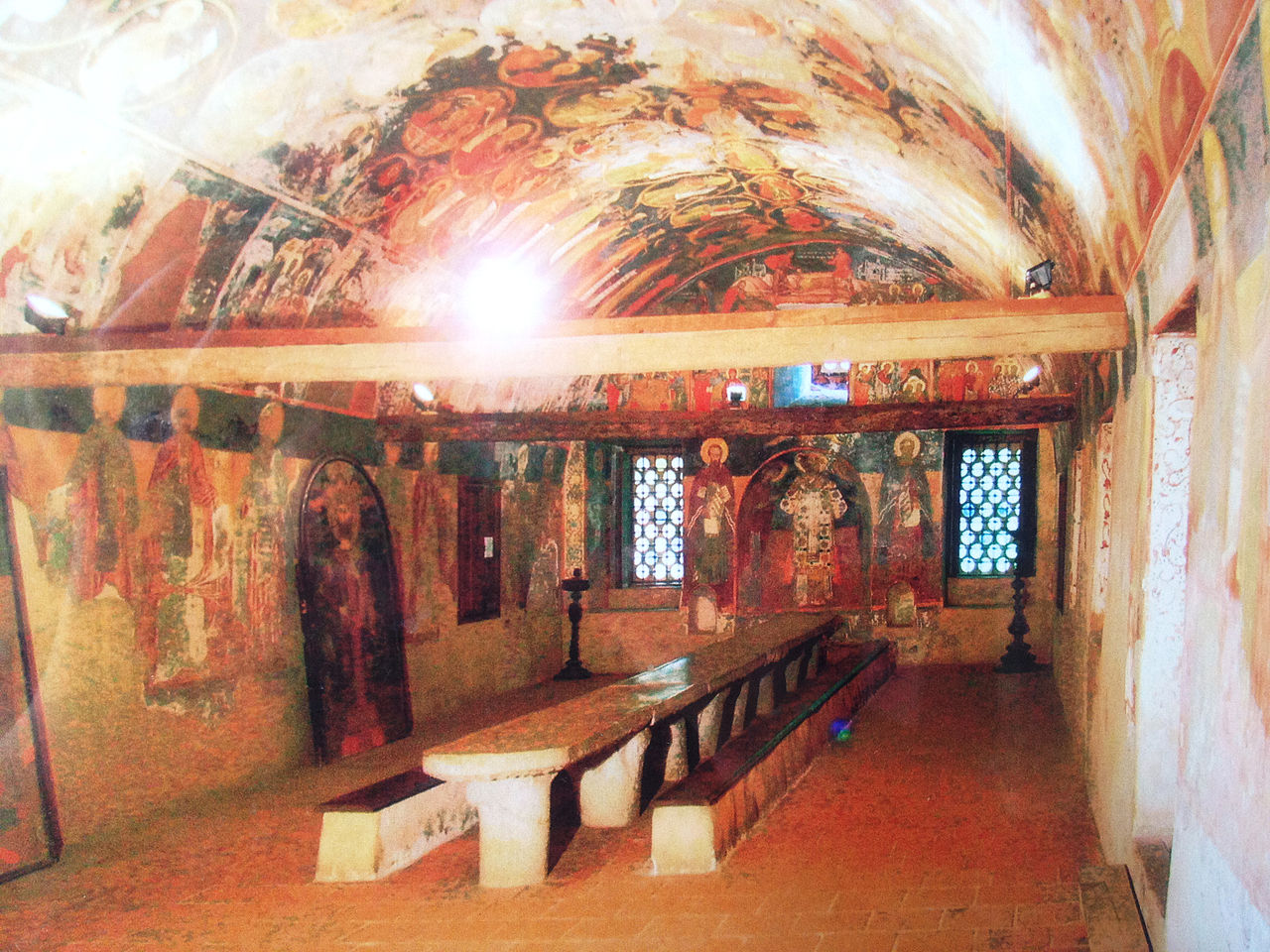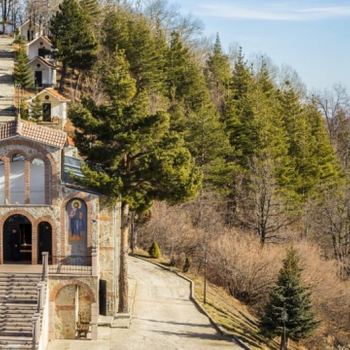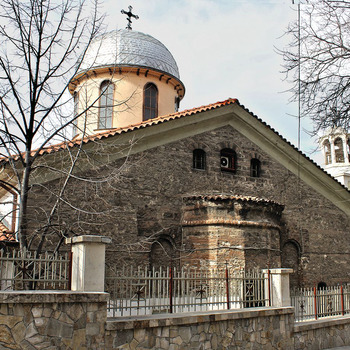Bachkovo Monastery
Overview
Bachkovo Monastery "Assumption" is a stauropegial monastery near the village of Bachkovo, Asenovgrad municipality, Plovdiv region. It is the second largest Bulgarian monastery after Rila.
The monastery was founded in 1083 by Gregory Bakuriani - a great domestic of the western armies of the Byzantine emperor Alexius I Comnenus and Abazius, his brother. The monastery statute (typical) compiled by order of the founder is preserved in transcripts in Greek and Georgian. According to him, the secular and ecclesiastical authorities, incl. the Metropolitan of Philippopolis (Plovdiv), have no right to interfere in the affairs of the monastery and access to it is closed to Greek monks.
Bachkovo initially developed as a center of Georgian monasticism. Towards the end of the 11th century, a literary school was formed there, known in the sources as Petritsonska - a name derived from the original name of the neighboring fortress Petrich. Through the translation work of the writers working in the monastery, the connections of medieval Georgia with Byzantium were realized. One of these writers is the Georgian Neoplatonic philosopher Ioan Petritsi (c. 1050 - 1130), a student of Ioan Ital. Since that time, two important buildings have been preserved - the ossuary and the church "St. Archangels.
In 1344, the Stanimah region was ceded to Ivan-Alexander by the Byzantine Empress Anna of Savoy in exchange for promised help in the fight against John Cantacuzino. For about twenty years the monastery enjoyed the patronage of the Bulgarian king (for whose portrait in the monastery ossuary see below). Bachkovo remained within the borders of the Tarnovo state until 1364, when the Ottomans conquered Plovdiv, Stanimaka and other Rhodope fortresses.
After the fall of Tarnovo in 1393, Patriarch Evtimiy was expelled "to Stenimah". It is believed that it was the Bachkovo Monastery. The patriarch continued his literary work with the help of his student Andrei-Androniki died around 1404 see below.) In the Stanimahki (apparently Bachkovo) monastery, the Ecumenical Patriarch Simeon (1467) also withdrew after his removal from the throne. It seems that the monastery received donations at that time from Mara Brankovic, whose name is recorded in two old Bachkovo monuments.
It is not certain whether the information preserved in Ottoman documents from the 16th century refers to the Bachkovo Monastery. A postscript in the second Lovchanski collection mentions that the church of the monastery "fell to the ground from the time of the reign of the wicked." At the end of the 16th century, during the time of Patriarch Jeremiah II, the fraternity The new Church of the Assumption (1604) and the refectory (1623) were built by Abbot Parthenius. In 1801, however, Hieromonk Macarius was confirmed abbot not by the Patriarch of Constantinople, but by the Metropolitan of Plovdiv - "according to the long-established old custom".
The presence of gifts from Bulgarian relatives and fellow citizens, as well as several Slavic manuscripts, testify to the presence of Bulgarian monks. However, by 1869 a school was opened in the monastery, where children from the surrounding villages study in Greek.
On December 8, 1894, at the request of the monks, the monastery passed under the authority of the Bulgarian Exarchate. The hieromonks Haralampius, Dionysius, Joasaph and the monk Seraphim were sent there to establish a Bulgarian brotherhood.
In 1941-47 the Plovdiv Theological Seminary was evacuated in Bachkovo. A fire broke out on the night of December 10, 1947, destroying the rich seminary library.
Evtimiy Tarnovski was buried in the "Church of Petriotis", usually identified with that of the Bachkovo Monastery. Most scholars, however, believe that the tomb discovered in 1905 under the Church of the Holy Archangels is not his. The Bulgarian Exarch Stefan and Patriarch Kiril wish to be buried in Bachkovo. Their remains rest in the western part of the main monastery church "Assumption".
The biggest shrine of the Bachkovo Monastery is its icon of the Most Holy Mother of God. It is kept in a special place in the cathedral monastery church and because of its miracles it is the subject of worship by a constant stream of believers.
From the whole painting only the faces of St. The Mother of God and the Infant, and everything else is covered in honor with two silver fittings. On the older of them there is an inscription, according to which it was donated in 1311 by the Georgians Athanasius and Okropir (Chrysostom). The newer fittings date from 1819.
The earliest written information about this icon is given by the Plovdiv priest Konstantin Ikonom in his description of the Plovdiv diocese published in 1819: “We do not know how and when the icon was brought here. According to a legend, after the conquest of these places in Thrace, the icon was found in a cave half an hour away from the monastery on the south side of the gorge, now called Clovion, where there is a church of the Holy Mother of God and a holy spring next to it. And every year on the second day of Easter, when they say that the icon was found, they carry the icon of the mentioned Clovion in a liturgical procession and hold a liturgy in the nearby church of the Holy Mother of God. Many people from nearby villages take part in this procession. "
Alexandra Karamihaleva, in turn, said in 2007 that according to some legends, the icon "flew" from a Georgian monastery and "landed" in the area "Kluviata" near Bachkovo. An unburned fire broke out during the "landing". Two shepherds, a brother and a sister, spent three nights contemplating the unquenchable flames and came to see what this wonderful fire was. They reported to the monastery and the monks with lithium took her to the church "St. The Mother of God ". They put it on the iconostasis. Several times the icon "ran" to the "Kluvia" and the brothers returned it to the monastery. One of the monks said that he dreamed of the Virgin Mary and said that she would stay in the monastery if she was assigned a special place on the right at the entrance she sees who enters the house of God with what heart, and every year on the second day of Easter she is "taken" to her old place. At Easter, she is taken to the Kluvia with lithium, where she prays.
Recommended
• Assen's fortress
• Kluviata Cave Rock Chapel
• Muldavski Monastery "St. Petka Moldavska"
• Kuklen Monastery "St. St. Kozma and Damyan "


 Bulgarian
Bulgarian Romanian
Romanian


